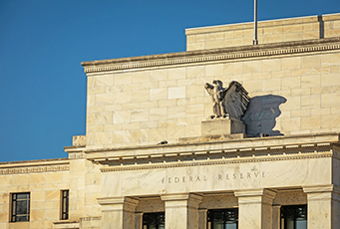Despite a global pandemic and widespread government-imposed lockdowns, the S&P 500 in 2020 finished 18.4% higher than where it began, a staggering return considering it was down more than 30% at its lowest in March. Attempts to mitigate the virus early in the year resulted in unprecedented economic contraction levels for the global economy. Yet, the stock market persisted. But why?
The strength of the stock market’s bounce back has been attributed to investors looking beyond current earnings and betting on a return to normalcy in the future. While that perspective is not without merit, the role central banks across the world played in orchestrating the recovery cannot be understated.
With the Federal Reserve leading the way, central banks took extraordinary action to stimulate the economy by slashing interest rates and quickly expanding the money supply. While their efforts succeeded in pushing the stock market to fresh record highs, the prospect of meaningful future price inflation as a consequence is very real.
Record Levels of Money Creation
The stock market was not the only asset that increased in 2020. The price of gold surged to over $2,000 per ounce, hitting a record high. Silver likewise experienced tremendous growth. Even Bitcoin participated in the rally, rocketing to over $34,000.
Propelling the general asset price spike was the increase in the money supply, resulting from central banks' decisions to create the money needed to inject into the financial markets. The aggregate money supply of the world's twelve largest economies (including the U.S., China, Japan, and the Eurozone, among others) increased by $14 trillion in 2020. The surge to a total value of $94.8 trillion is the largest annual increase in global money supply, dwarfing the previous record from 2017 of $8.38 trillion.
Another way to look at this increase in money supply is through the central banks' balance sheets' relative size to their countries' gross domestic product. Collectively, the November 30 balance sheets of the Federal Reserve, the European Central Bank, the Bank of Japan, and the Bank of England comprised 54.3% of the countries' GDP. That is an increase from 36% at the end of 2019 and a mere 10% in 2008. There has undoubtedly been tremendous growth.
The Consequences of Stimulus
The increase in central banks' balance sheets helped push interest rates to record lows, with over $18 trillion of government debt issued at negative yields. This has pushed investors into riskier assets (like stocks, junk bonds, and cryptocurrencies) as they search for positive returns. Those who have owned these assets have certainly benefited from the flood of money into the market. However, the long-term consequences of this money printing remain unknown.
An increasing money supply is the original definition of inflation. The subsequent increase in consumer prices is the consequence. While many economists and financial forecasters from the 2008 global financial crisis incorrectly predicted massive consumer price inflation, there is reason to believe this time may be different.
A decade ago, central bank interventions served as a backstop for financial institutions, and the newly created money never really found its way into the consumer economy. Today, however, large portions of the economic stimulus provide aid to individuals and small businesses directly.
This aid has a higher likelihood of eventually flowing through the real economy, pushing consumer prices higher. J.P. Morgan estimates that even after the Fed engages in its massive 2021 bond-buying program, there will still be a $1.8 trillion excess supply of U.S. Treasuries.
This "bond demand gap" will require some combination of the U.S. government offering higher interest rates to entice investors and the Fed again entering the market to monetize the debt to prevent rates from spiking too high. This would put further upward pressure on consumer price inflation in the future.
Conclusion
The stock market performance ended up being one of the few bright spots in 2020. However, the steps taken by the Federal Reserve and other central banks around the world to stimulate global markets may result in unexpected consumer price inflation in the next few years. To ensure your portfolio is adequately diversified for your goals and risk tolerance, speak with your financial advisor.
Schedule a Consultation
We have helped our clients answer these questions and more. If you want a clear understanding of your financial future, and need help making changes to reach your goals, schedule a consultation and we can get started.
Please remember that past performance may not be indicative of future results. Prior to implementing any investment strategy referenced in this article, either directly or indirectly, please discuss with your investment advisor to determine its applicability. Any corresponding discussion with a Bedel Financial Consulting, Inc. associate pertaining to this article does not serve as personalized investment advice and should not be considered as such.
Recommended Articles
Private Equity and M&A in a Low-Rate World
Deal flow is the stream of business proposals, investment...
The Bonds that Tie – An Exciting Look at Fixed Income
With today’s yields being much higher than the close to...





